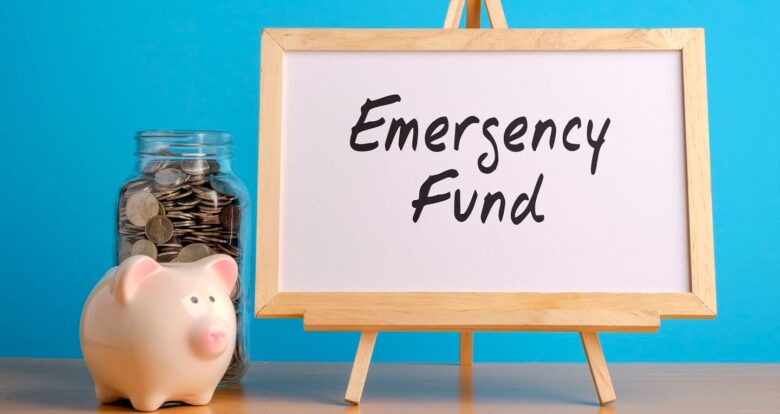Every household will eventually experience unexpected expenses—be they repair costs for broken air conditioning units, medical expenses, or job loss. When these events arise, having an emergency fund cushion helps avoid running up credit card debt or selling long-term investments to cover shortfalls in finances.
Experts typically advise individuals to have three to six months’ worth of living expenses saved up. To meet this goal, individuals can reduce expenses where possible and increase income, taking advantage of any windfalls such as tax refunds or bonuses to expedite savings.
1. Unexpected Expenses
Unexpected expenses can range from minor car repairs to catastrophic natural disasters and include life events like job loss or divorce as well as financial crises such as medical bankruptcy.
Unpredictable expenses are unavoidable, but you can plan for them by setting aside money in an emergency savings account. Aim to set aside enough for three to six months’ living expenses as soon as possible by setting aside part of your income or redirecting windfalls such as tax refunds or work bonuses into a separate savings account.
By creating a safety net, you can protect yourself from financial challenges without resorting to credit card debt or liquidating long-term investments at fire sale prices. Building this safety net also can bring peace of mind while helping you achieve longer-term financial goals.
2. Job Loss
An emergency savings account is one of the best ways to ease financial anxiety during unexpected situations and help manage life’s curveballs without falling into risky debt or derailing your long-term savings goals.
Even high-income earners can experience unexpected expenses such as car repairs, medical emergencies, or job loss. Freelancers, contractors, and small business owners may incur professional liability and legal expenses that quickly add up – or unexpected bills that pop up out of nowhere!
Your emergency fund should include windfalls such as tax refunds, bonuses, and credit card rewards. A good rule of thumb is to save three to six months’ expenses in an emergency savings account; depending on your personal circumstances, however, this number could increase or decrease accordingly. Regardless of how much is put away into this savings account each month, it’s key that it becomes part of your lifestyle and becomes an automatic saving practice.
3. Medical Bills
Medical expenses are one of the primary sources of a financial emergency, including co-pays and deductibles not fully covered by insurance, visits to emergency rooms, or costly medications and treatments; they may even involve costly home repairs and veterinarian visits.
According to the Survey of Income and Program Participation (SIPP), 15% of households reported medical debt in 2021. This analysis excluded bills likely covered by health insurance as well as debt considered non-medical and therefore not subject to federal protections such as wage garnishments or property liens.
Many experts advise saving three to six months’ worth of living expenses as an emergency fund. Use your budget to determine how much savings are necessary, then determine how much each month can be put aside towards reaching this goal – the faster you save, the sooner your emergency fund will grow!
4. Home Repairs
Should unforeseen home repair expenses arise, such as a broken air conditioner or leaky roof repair work, having an emergency fund in place can help ease any financial stress and help avoid incurring debt through credit card or loan payments.
An emergency savings or money market account with a high yield should be used as the repository of emergency funds, keeping it separate from any spending funds. Experts advise saving three to six months’ worth of expenses in your emergency fund – although this number may change based on lifestyle and income factors.
Emergency expenses typically involve unexpected job loss or reduced income, major medical bills not fully covered by insurance, and urgent home repairs such as fixing a leaky roof. Unexpected expenses can often prove more stressful than anticipated, which is why an emergency fund is essential in safeguarding against unexpected financial shocks.
5. Unplanned Travel
Even experienced travelers can find themselves faced with an unexpected turn of events that alters their carefully planned itineraries, often at great expense. While such costs may be frustrating, unplanned travel can offer unique experiences, its spontaneous nature reinvigorating exploration while opening new opportunities and making memories to last a lifetime.
This study explores the varied attributes and values associated with unplanned travel through qualitative interviews. It identifies three modes of value experience as well as discussing their generative mechanisms, providing us with greater insights into unplanned travel. By expanding on current literature regarding unplanned travel, this research contributes to improving our understanding of this type of travel.
However, people should only utilize emergency reserves in actual emergencies and never for holidays, leisure activities, debt payments, or non-essential home upgrades. They should store these expenses in separate savings accounts or prepaid cards to avoid interfering with other financial goals.
6. Unscheduled Expenses
Establishing an emergency savings account can help protect against unintended dipping into retirement or other financial goals. To maximize efficiency, store this fund in a high-yield account that facilitates fast withdrawals without fees or penalties; should you find yourself tapping into it unexpectedly, commit to replenishing it promptly.
Even high-earners might be surprised by job loss or house problems, despite typically thinking they don’t need an emergency fund. By having an emergency savings plan in place, you can have confidence that any unanticipated expenses won’t derail your long-term plans – saving three to six months’ expenses is ideal, but depending on the specifics of your circumstances, you may need to save more or less often. Strategies like budgeting, microsaving, and stashing away windfalls like tax refunds or work bonuses can all help reach your savings goal.




